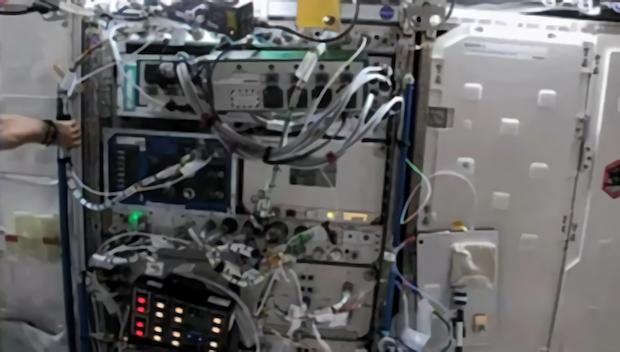In August 2017, Hewlett Packard Enterprise (HPE) published an experiment on Spaceborne Computer.The company, headquartered in Palo Alto, has launched a supercomputer in space in cooperation with NASA (Aerospace Authority) and SpaceX.One year after this announcement (November 1), HPE has announced that Spaceborne Computer's high -performance computing (HPC) will provide astronauts of the International Space Station (ISS).did.
HPE boldly calls this new "outer space service".This service uses ISS U.S.Scientists in the NATIONAL LABORATORY can analyze on the station without sending data to the ground base for data processing.
Dr. English Lim Goh, CTO and VP in the AI field, says HPE's high -performance computing and AI CTO and VP in the AI field.In the range of over 400 to 1,000 miles, communication with the earth is up to 20 minutes.This can hinder the success of missions far away from the earth.Currently, most of the outer space network bandwidth is spent on sending a large amount of datasets, and there are few bandwidth for emergency transmissions and important communication.
If everything goes as planned, ISS astronauts will be able to use SpaceBorne Computer to provide detailed analysis and processing of large amounts of data.
Dr. GOH says:
"Spaceborne Computer" is one of the first commercial off -the -shelf computers launched on orbit.This is his first COTS that gave birth in September 2017 and was processed at one terraplops speed in the weightless space.In the blog posted in July, HPE's American HPC technical manager, Dr. Mark Fernandez, unstable network connections and power supply, unpredictable radiation, solar flare, rags, meteor dust, correctly in advance.He stated that it was necessary to withstand unstable temperature decrease that caused damage to components that are not idle.
According to HPE, the software mounted on SpaceBorne Computer will reduce errors by managing the computer system slot ring in real time based on the current state.Already, the two abnormal situations have already been dealt with,: a two -hour suspension that occurred when an astronaut was replacing electrical parts of another system and a 16 -hour emergency suspension due to a fire warning malfunction.
Spaceborne Computer is based on HPE's Apollo PC40 server.The Apollo PC40 server has up to four NVIDIA TESLA GPUs (graphics processing unit), 12 2,666MHz DDR4 DIMMs, two SFF hard drives or solid state drives, and have two 2000W power supply.2 socket server based on Intel Xeon processor scalable.However, since it was necessary to pass 146 or more safety tests and certifications before the launch of the universe, Spaceborne Computer adopts a stronger configuration than established models.

It is optimized for deep learning workload, and is managed within a cluster group and has an HPC integrated node that supports network porridge arrays.Until now, more than 300 benchmark experiments have been completed on ISS.
HPE is no longer a newcomer in the supercomputer industry.Columbia, jointly developed by the company, has a super cluster with 10,240 processors, and in 2004 he was said to have the world's second largest processing speed in the TOP500 list.However, HPE is now looking at its eyes to space.
Fernandez says:
In terms of using computers in outer space, SpaceBorne Computer is a pioneer in hardware that can exceed Mars, and in the future, an architecture called HPE is called "memory -led computing".It is.In May 2017, HPE theoretically demonstrated a system with a 160 -terabites single memory pool, which can theoretically extend 4,096 Yota bytes (250,000 times, although all digital data from all over the world).
With such a computer, the processing of complex problems, which took several days, can be greatly reduced to a few seconds.
Kirk Bresniker, Chief Architect of Hewlett Packard Labs, said on his blog:
[Via VentureBeat] @Venturebeat
[Original text]
BRIDGEでは会員制度「BRIDGE Members」を運営しています。会員向けコミュニティ「BRIDGE Tokyo」ではテックニュースやトレンド情報のまとめ、Discord、イベントなどを通じて、スタートアップと読者のみなさんが繋がる場所を提供いたします。登録は無料です。